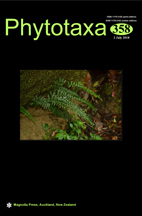Abstract
The Botryosphaeriaceae family is one of the most important groups of plant pathogenic fungi associated with tropical woody species such as Anacardium occidentale (cashew) and Mangifera indica (mango), which are fruiting species with broad distributions and high economic importance in north-eastern Brazil. This study was designed to characterize species of this family associated with cashew, mango and Psidium guajava (guava) that cause dieback and stem and branch cankers. Characterization comprised phylogenetic, morphological, physiological and pathogenic features. The phylogenetic study combined sequences of the internal transcribed spacer (ITS) of the rDNA and partial elongation factor 1-α (EF1-α) regions of DNA. Measurements of fungal conidia and colony growth on different culture media and at different temperatures were conducted. Pathogenicity tests were also performed through inoculation of different host species. By combining the sequences of the referenced genes, it was possible to identify the following Botryosphaeriaceae species: Neofusicoccum kwambonambiense, Neoscytalidium hyalinum and Pseudofusicoccum stromaticum as the first report in cashew, Neoscytalidium hyalinum in mango and Neofusicoccum brasiliense as the first report in guava. Examination of N. brasiliense revealed conidia, providing the first morphological description of the species. Neofusicoccum kwambonambiense did not sporulate, but the other isolates produced conidia with dimensions comparable to those described in the literature. All isolates were virulent to mango fruits and young cashew and “caja-umbu” plants, causing necrotic lesions and gum exudation by the hosts. The isolates of Neofusicoccum were the most aggressive in the inoculated hosts.

